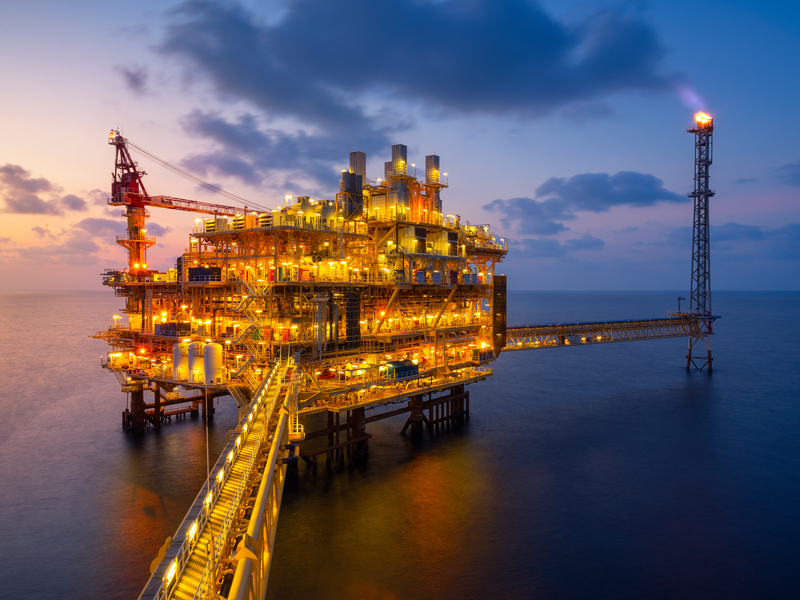Subsea production systems are wells located on the sea floor, as opposed
to the surface. As in a floating production system, the petroleum is extracted
at the seabed, and is then “tied-back” to a pre-existing production platform or
even an onshore facility, limited by horizontal distance or "offset.” The well is
drilled by a movable rig and the extracted oil and natural gas is transported
by undersea pipeline and riser to a processing facility. This allows one
strategically placed production platform to service many wells over a
reasonably large area. Subsea systems are typically used at depths of 500
meters or more and do not have the ability to drill, only to extract and
transport. Drilling and
completion is performed
from a surface rig.
Horizontal offsets of up
to 250 kilometers/150
miles are currently
possible. The aim of the
industry is to allow fully
autonomous subsea
production facilities,
with multiple wellpads,
processing, and direct
tie-back to shore. Photo:
Statoil
2.3 Upstream process sections
We will go through each section in detail in the following chapters. The
summary below is an introductory synopsis of each section. The activities up
to the producing wellhead (drilling, casing, completion, wellhead) are often
called “pre-completion,” while the production facility is “post-completion.” For
conventional fields, they tend to be roughly the same in initial capital
expenditure.
2.3.1 Wellheads
The wellhead sits on top of the actual oil or gas well leading down to the
reservoir. A wellhead may also be an injection well, used to inject water or
gas back into the reservoir to maintain pressure and levels to maximize
production.
1
3
Once a natural gas or oil
well is drilled and it has
been verified that
commercially viable
quantities of natural gas
are present for extraction,
the well must be
“completed” to allow
petroleum or natural gas
to flow out of the
formation and up to the
surface. This process
includes strengthening
the well hole with casing,
evaluating the pressure
and temperature of the formation, and installing the proper equipment to
ensure an efficient flow of natural gas from the well. The well flow is
controlled with a choke.
We differentiate between, dry completion (which is either onshore or on the
deck of an offshore structure) and subsea completions below the surface.
The wellhead structure, often called a Christmas tree, must allow for a
number of operations relating to production and well workover. Well
workover refers to various technologies for maintaining the well and
improving its production capacity.
2.3.2 Manifolds and gathering
Onshore, the individual
well streams are brought
into the main production
facilities over a network of
gathering pipelines and
manifold systems. The
purpose of these pipelines
is to allow setup of
production "well sets" so
that for a given production
level, the best reservoir
utilization well flow
composition (gas, oil,
water), etc., can be
selected from the available wells.
14
For gas gathering systems, it is common to meter the individual gathering
lines into the manifold as shown in this picture. For multiphase flows
(combination of gas, oil and water), the high cost of multiphase flow meters
often leads to the use of software flow rate estimators that use well test data
to calculate actual flow.
Offshore, the dry completion wells on the main field center feed directly into
production manifolds, while outlying wellhead towers and subsea
installations feed via multiphase pipelines back to the production risers.
Risers are a system that allows a pipeline to "rise" up to the topside
structure. For floating structures, this involves a way to take up weight and
movement. For heavy crude and in Arctic areas, diluents and heating may
be needed to reduce viscosity and allow flow.


